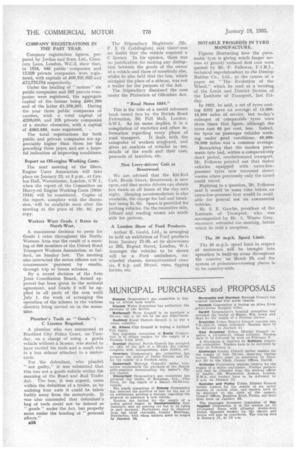NOTABLE PROGRESS IN TYRE • MANUFACTURE.
Page 38

If you've noticed an error in this article please click here to report it so we can fix it.
Figures illustrating how the pneumatic tyre is giving much longer service at greatly reduced first cost were quoted by Mr. F. Fellowes, F.I.R.I., technical superintendent to the Dunlop Rubber Co., Ltd., in the course of a paper on "The Evolution of the Wheel," which he read at a meeting. of the Leeds and District Section of the Institute of Transport, last Friday.
In 1922, he said, a set of tyres costing £321 gave an average of 12,0001,000 miles of service, but to-day's mileages of comparable tyres were three times that figure, although the tyres cost 65 per cent. less. Indeed, for tyres on passenger vehicles working under good conditions, 60,00070,000 miles-was a common average.• Remarking that the modern pneumatic tyre had, within a comparatively short period, revolutionized transport, Mr. Fellowes pointed out that motor vehicles equipped with extra-.low; pressure tyres now traversed desert wastes where previously only the camel' could travel.
Replying to a question, Mr. Fellowes said it would be some time before an extra-low-pressure tyre would be available for general use on commercial vehicles, Mr. S. E. Garcke, president of the Institute of Transport, who was accompanied by Mr. A. Winter Gray, secretary, attended the meeting, before which he held a reception.
The 30 m.p.h. Speed Limit.
The 30 m.p.h. speed limit in respect of motorcars will be brought into operation in built-up areas throughout the country on March 18, and the system of pedestrian-crossing places is, to be country-wide.




























































































